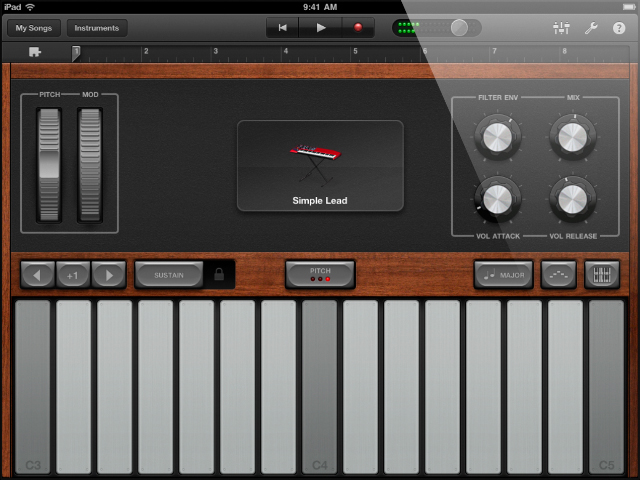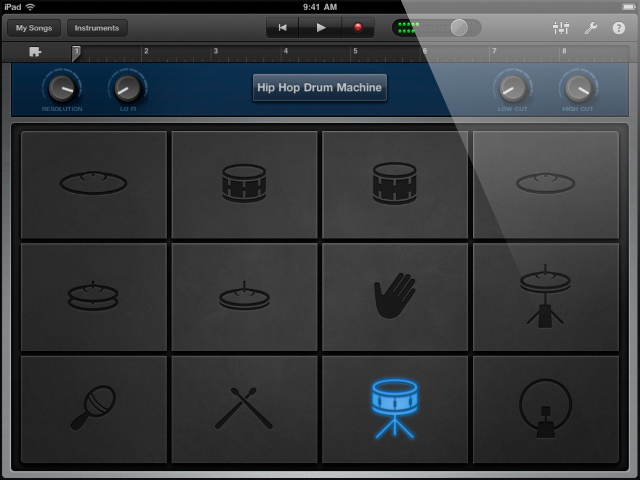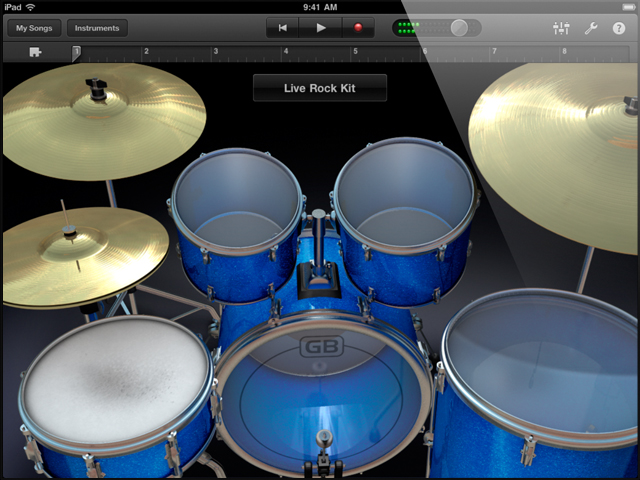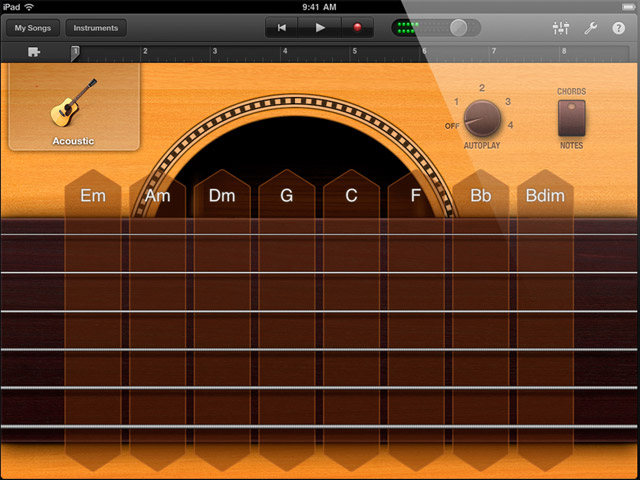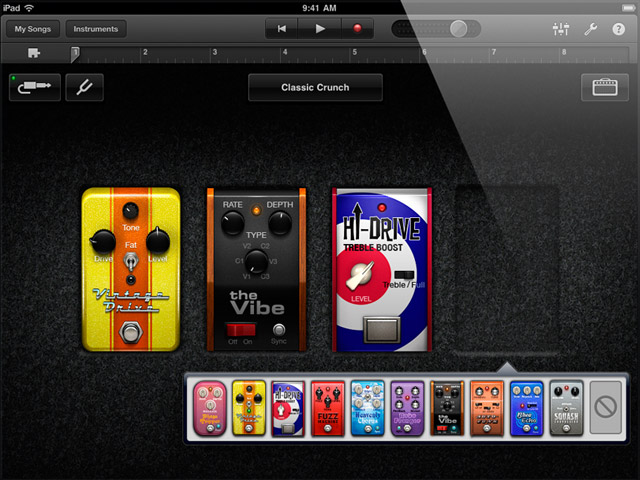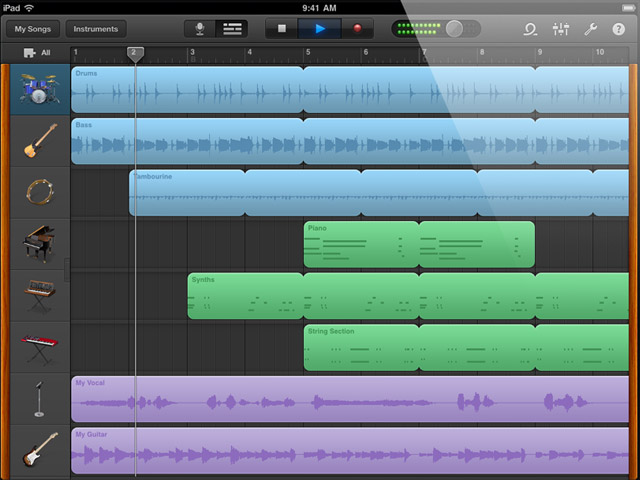
Apple is getting into mobile music production with a US$4.99 version of GarageBand that runs on iPad. It looks very impressive for a $5 app – which could be bad news for other music developers trying to set higher pricing for more serious apps. On the other hand, it also validates the notion of the iPad as a music creation platform, and it leaves plenty of room for other such tools. Capabilities:
- Touch-capable drums, drum machines, keyboards, and synths
- Interactive chord layouts for guitar, keyboard, bass, and drum patterns
- Audio recorder (with some silly effects, like “chipmunk” and “monster”)
- Guitar amps and effects – some nine amp models, ten effects
It appears this requires the new dual-core CPU on the iPad 2.
Apple tells CDM that the software is compatible with both the original iPad and the new iPad 2.
The heart of the app, though, is a multi-track arrange window borrowed directly from desktop GarageBand. Some fancier features appear to be missing (notation may be missed, in particular, and I don’t see extras like a tempo track), but otherwise, it’s the MIDI and audio arrangement you know from the Mac. You can even take projects from the iPad into GarageBand for a mobile-to-desktop workflow. (The reverse appears not possible, which would make sense – the mobile version is a subset of the desktop version.)
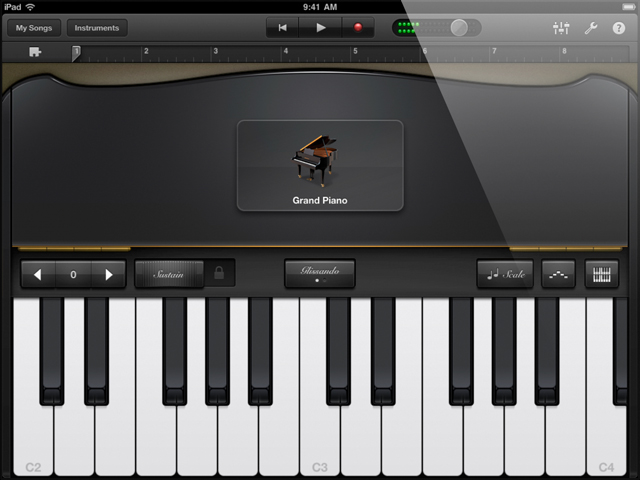
The instruments are impressive, too. Whereas the first GarageBand emphasized using pre-built loops, this version is actually more suited to a songwriter’s sketchpad: you have automatic chord generation as you previously saw only in music workstation keyboards. The 4×4 drum machine, synths, and keyboards look fairly basic, but they don’t skip over basic editing features. All in all, it’s unquestionably the most we’ve seen for $5 in a mobile app. On one hand, that could make Apple’s developers nervous – but, paradoxically, I think that at $5, someone has enough pocket change left over to go buy your $5, $10, or $20 app.
It’s also an app that thinks through mobile workflows. You can send to iTunes, email songs, and on a Mac, open in GarageBand.
In fact, my only big question is how software with live instruments on a tablet is going to contend with running out of system resources. We’ll know soon; the app isn’t available as I write this, but is promised soon.
I’m also a bit unclear on hardware compatibility, but I’m told MIDI and audio hardware will work, which makes some sense. I’ll try to reach out to my contacts at Apple on some of these questions.
There’s also no question in my mind that this significantly widens the gap between iOS and everything else – notably Android. That’s a discussion best left for another post, but it’s hard for me to see any competitor making the investment in music – still a fairly limited market – that Apple has. At the same time, looking at music creation in general, the more visible software like this is – and the more successful it is, which remains to be seen – the more attention mobile music creation may get from the public and vendors alike. (Technically speaking, by the way, there’s no reason you couldn’t exploit horsepower on next-generation tablets like the Motorola Xoom. I’m sure we’ll make use of the extra cycles with libpd Pure Data patches for both platforms. But there are lots of other variables, technical and in terms of the marketplace, that make iOS friendlier than Android to commercial music development by an order of magnitude.)
I’m curious to hear from iPad owners, though: does GarageBand appear, on first glance, to offer tools you don’t have in other mobile workstations? Would it make you consider iPad music if you hadn’t before?
(And, in the meantime, we can dream of our tablet, touch-savvy tracker. I know some of you want it.)
Screen images courtesy of Apple.
http://www.apple.com/ipad/from-the-app-store/garageband.html
